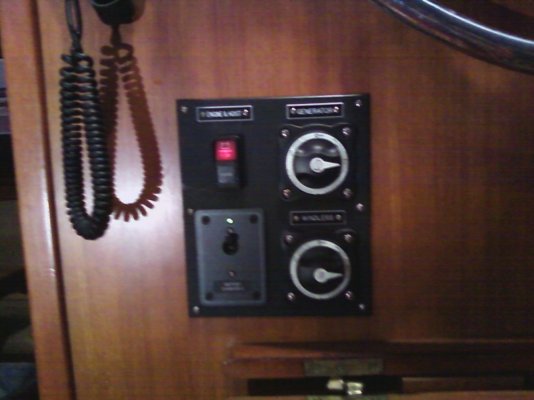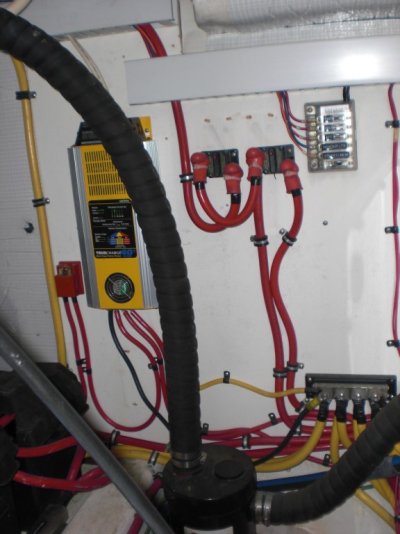Tom.B
Moderator Emeritus
- Joined
- Jul 30, 2009
- Messages
- 5,839
- Location
- USA
- Vessel Name
- Skinny Dippin'
- Vessel Make
- Navigator 4200 Classic
It's time for Skinny Dippin's annual winter project. This year I have decided to upgrade the charging system. Although, there is a plumbing upgrade to do in order to make room for this and I'll open a thread for that in the General Maintenance forum.
Over the past 2.5 years we've owned her, I have never completely understood the charging system, thus, never really trusted it. As with the great fuel system upgrade I undertook last year, I intend to learn everything I can about this system so that next season, we'll be able to spend much more time at anchor with the comfort of knowing that we'll have enough power to enjoy the time and still start The Great Dr. Perky (yes, our engine has a name) in the morning.
The basic plan is similar to what we did with the fuel system which is to centralize the major components on a piece of King Starboard to allow for ease of maintenance and control. I'm adding a new "smarter" charger (but it's not too smart), a new 2000W inverter (never had one on this boat), 4 new 6V golf cart batteries (Trojans maybe), a new starter battery, and all new switches and wire.
I must once again thank RickB for all his help with this so far. Although, we have disagree on a few of the particulars, Rick has once again simplified a rig I had setup to be WAY too complex.
Below is a picture the first mock-up of the parts I have so far. The two switches on the left are for starter disconnect and battery combining. The single switch in the center is house battery cutoff. Just above is the t-type 400A main fuse (although I may not use it once I figure out my combined loads). On the right is an Iota 55A charger with IQ4. Upper left is a Balmar Duo Charge to trickle the start battery while the alternator charges the house bank.
**NOTE** There will be a ground buss on the lower right... It was on backorder. :-(

elecmockup1 by GonzoF1, on Flickr
-- Edited by GonzoF1 on Monday 16th of January 2012 09:53:43 AM
Over the past 2.5 years we've owned her, I have never completely understood the charging system, thus, never really trusted it. As with the great fuel system upgrade I undertook last year, I intend to learn everything I can about this system so that next season, we'll be able to spend much more time at anchor with the comfort of knowing that we'll have enough power to enjoy the time and still start The Great Dr. Perky (yes, our engine has a name) in the morning.
The basic plan is similar to what we did with the fuel system which is to centralize the major components on a piece of King Starboard to allow for ease of maintenance and control. I'm adding a new "smarter" charger (but it's not too smart), a new 2000W inverter (never had one on this boat), 4 new 6V golf cart batteries (Trojans maybe), a new starter battery, and all new switches and wire.
I must once again thank RickB for all his help with this so far. Although, we have disagree on a few of the particulars, Rick has once again simplified a rig I had setup to be WAY too complex.
Below is a picture the first mock-up of the parts I have so far. The two switches on the left are for starter disconnect and battery combining. The single switch in the center is house battery cutoff. Just above is the t-type 400A main fuse (although I may not use it once I figure out my combined loads). On the right is an Iota 55A charger with IQ4. Upper left is a Balmar Duo Charge to trickle the start battery while the alternator charges the house bank.
**NOTE** There will be a ground buss on the lower right... It was on backorder. :-(

elecmockup1 by GonzoF1, on Flickr
-- Edited by GonzoF1 on Monday 16th of January 2012 09:53:43 AM
















